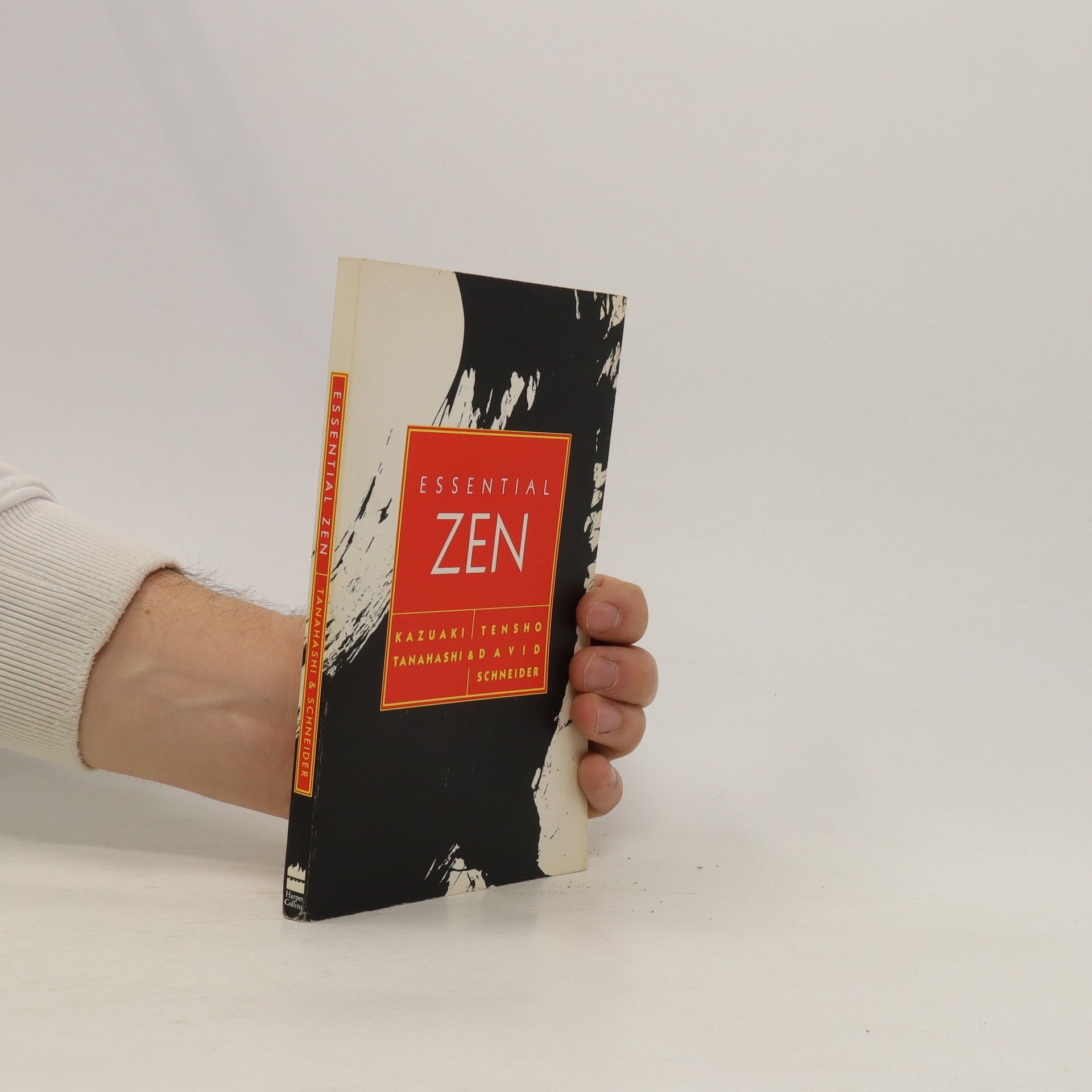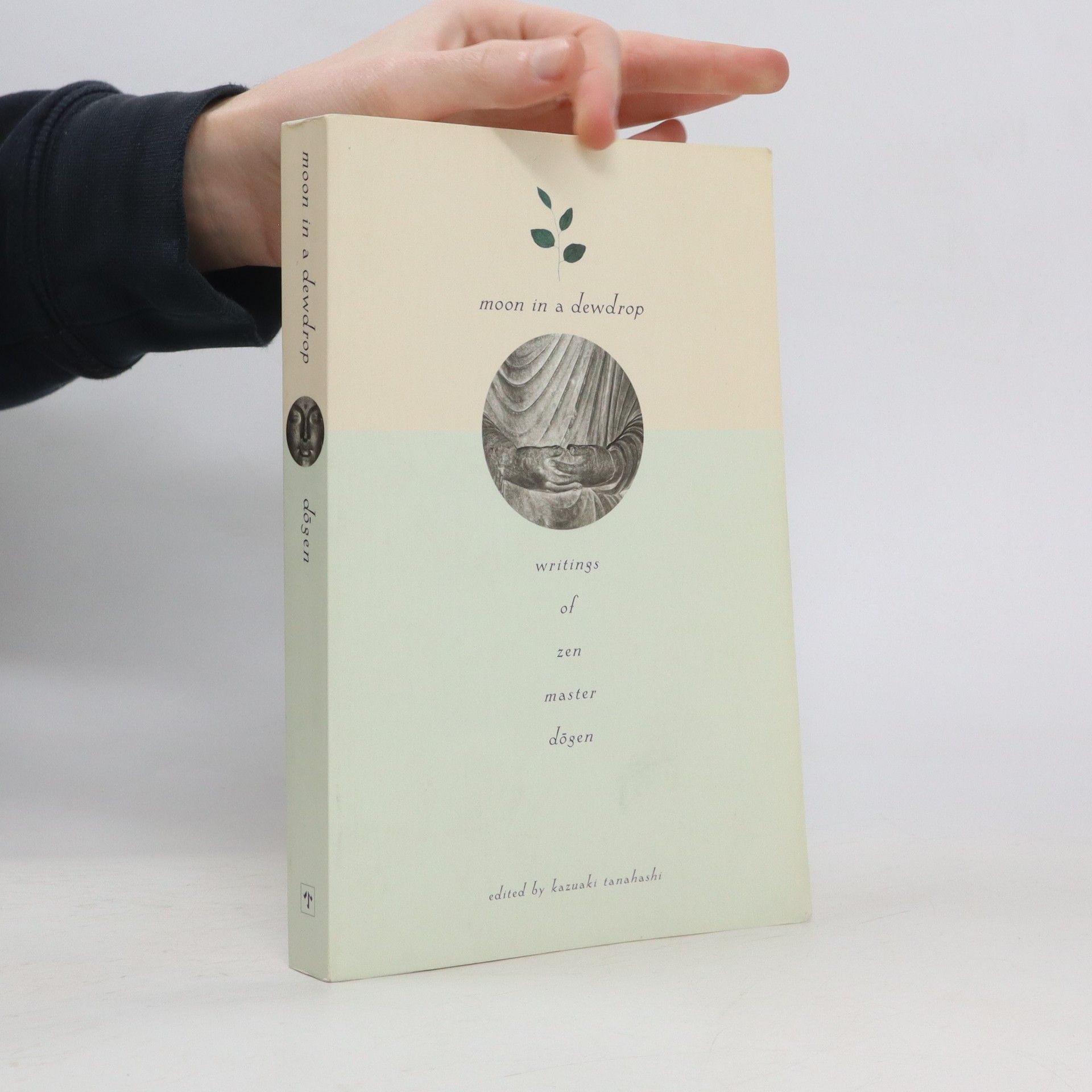Renowned artist Kaz Tanahashi reveals the deep, inner spiritual connections that Zen gardens can foster, with over 75 stunning full-color photos of the masterpiece gardens of Kyōto, Japan. Imagine yourself in Kyōto, Japan, gazing at an ancient temple garden. How would you contextualize what you are seeing? What is the history of this centuries-old contemplative art form of Zen gardening? What are its symbols and concepts? Richly illustrated with full-color photographs, Gardens of Awakening guides you through a series of Zen temple gardens, most of which were created from the fourteenth through seventeenth centuries. Some are teeming with plants and flowing water, while others have only rocks and sand. All share in the Zen aesthetics of awakening. Through essays and commentary on Mitsue Nagase’s striking photographs, beloved Zen artist and translator Kazuaki Tanahashi presents the gardens in terms of seven qualities that arise from Zen practice: direct, ordinary, vigorous, gleaming, pivotal, nondual, and inexhaustible. Relating these qualities to the development of Zen culture and its influence on Japanese art, Gardens of Awakening invites you deep into the heart of Zen.
Kazuaki Tanahashi Ordre des livres
Kazuaki Tanahashi est un artiste et militant dont l'œuvre fusionne la calligraphie avec un profond engagement pour les causes de la paix et de l'environnement. Ses peintures calligraphiques, exposées à l'international, incarnent l'esprit de la tradition est-asiatique tout en reflétant son dévouement de toute une vie à la gestion de la planète. Par son art et son enseignement, Tanahashi partage une vision d'un monde où la beauté et l'harmonie sont en équilibre avec la responsabilité écologique.






- 2024
- 2023
Hoher Himmel, Großer Wind
Leben und Poesie des Zen-Meisters Ryokan
Kazuaki Tanahashi, japanischer Kalligraphie-Meister, Autor, Dichter, Übersetzer und Friedensaktivist und Friederike Juen Boissevain, Ärztin und Zen-Lehrerin, widmen sich in diesem Buch dem Leben, den Gedichten und den Kalligraphien des bis heute hochgeschätzten japanischen Poeten und Zen-Meisters Daigu Ryokans (1758-1831). Das Buch enthält neben einer ausführlichen Lebensbeschreibung und einigen Abdrucken von Ryokans Kalligraphien auch zahlreiche erstmals ins Deutsche übersetzte Gedichte und Anekdoten.
- 2022
Delight in One Thousand Characters
- 176pages
- 7 heures de lecture
"An esteemed masterpiece, the One Thousand Character Essay embodies the philosophy, mythology and history of ancient China. The Essay was composed by the literary giant Zhou Xingsi in the sixth century as a rhymed composition with no repeated ideographs. It has been sung to infants as a lullaby, functioned to teach language and writing, used as library index codes and as signs for seating applicants for examinations selecting public officials. The One Thousand Character Essay provides a window into the social values of the times and the importance of nature in defining the individual's and society's relation to the larger world. It refers to and draws on the meaning of the writing of Confucius, Laozi, Mengzi, Mozi, and Zhuangzi, the essential ancient Chinese writers. As the Essay reflects core values in Chinese civilization throughout time and gives insight into its major early writers, it can be a fundamental text in studying Chinese classical works. Its influence extended to Korea, Japan, Vietnam, and beyond"-- Provided by publisher
- 2018
A fresh translation--and new envisioning--of the most accessible and beloved of all classic Chinese poetry. Welcome to the magical, windswept world of Cold Mountain. These poems from the literary riches of China have long been celebrated by cultures of both East and West—and continue to be revered as among the most inspiring and enduring works of poetry worldwide. This groundbreaking new translation presents the full corpus of poetry traditionally associated with Hanshan (“Cold Mountain”) and sheds light on its origins and authorship like never before. Kazuaki Tanahashi and Peter Levitt honor the contemplative Buddhist elements of this classic collection of poems while revealing Hanshan’s famously jubilant humor, deep love of solitude in nature, and overwhelming warmth of heart. In addition, this translation features the full Chinese text of the original poems and a wealth of fascinating supplements, including traditional historical records, an in-depth study of the Cold Mountain poets (here presented as three distinct authors), and more.
- 2018
Painting Peace
- 224pages
- 8 heures de lecture
A revered modern artist and Zen teacher offers an inspirational account of how his art has been the expression of a life of social activism. “Awakening,” says Kazuaki Tanahashi, “is to realize the infinite value of each moment of your own life as well as of other beings, then to continue to act accordingly.” This book is the record of a life spent acting accordingly: Through his prose, poetry, letters, lyrics, and art, Tanahashi provides an inspirational account of a what it’s been like to work for peace and justice, from his childhood in Japan to the present day. Included are fascinating vignettes of the seminal figures who refined his views--among them Daniel Ellsberg, Gary Snyder, Mayumi Oda, and Morihei Ueshiba, the founder of Aikido--as well as striking examples of the art he has so famously used to bear witness to the infinite value of life.
- 2016
Heart Of The Brush
- 432pages
- 16 heures de lecture
"Its history, techniques, aesthetics, and philosophy--with an in-depth practical guide to understanding and drawing 150 characters. A guide to the history and enjoyment of Chinese and Japanese calligraphy that offers the possibility of appreciating it in a hands-on way--with step-by-step instructions for brushing 150 classic characters. This book is a comprehensive and accessible introduction to the history and art of calligraphy as it's been practiced for centuries in China, Japan, and elsewhere in Asia. It works as a guide for the beginner hoping to develop an appreciation for Asian calligraphy, for the person who wants to give calligraphy-creation a try, as well as for the expert or afficionado who just wants to browse through and exult in lovely examples. It covers the history and development of the art, then the author invites the reader to give it a try. The heart of the book, called Master Samples and Study, presents 150 characters--from action to zen --each in a two-page spread. On each verso page the character is presented in three different styles, each one chosen for its beauty and identified by artist when possible. The character's meaning, pronunciation (in Chinese, Japanese, Korean, and Vietnamese), etymology, the pictograph from which it evolved, and other notes of interest are included. At the bottom of the page the stroke order is shown: the sequence of brush movements, numbered in their traditional order. On each facing recto page is Kaz's own interpretation of the character, full page."--Wheelers.co.nz
- 2015
Zen Chants
- 128pages
- 5 heures de lecture
An introduction to Zen chanting practice, with new accurate and chantable translations of the texts used in Zen centers and monasteries throughout the English-speaking world—by the renowned translator of Dogen and Ryokan. A Zen chant is like a compass that sets us in the direction of the awakened life; it is the dynamic, audible counterpart to the silent practice of zazen, or sitting meditation; and it is a powerful expression of the fact that practice happens in community. Here is a concise guide to Zen chants for practitioners, as well as for anyone who appreciates the beauty and profundity of the poetry in dharma. An introduction to the practice is followed by fresh and carefully considered translations and adaptations of thirty-five chants—some common and others less well known—along with illuminating commentary.
- 2015
The Heart Sutra
- 288pages
- 11 heures de lecture
An illuminating in-depth study of one of the most well-known and recited Buddhist texts, by a renowned modern translator The Prajna Paramita Hridaya Sutra is among the best known of all the Buddhist scriptures. Chanted daily by many Zen practitioners, it is also studied extensively in the Tibetan tradition, and it has been regarded with interest more recently in the West in various fields of study—from philosophy to quantum physics. In just a few lines, it expresses the truth of impermanence and the release of suffering that results from the understanding of that truth with a breathtaking economy of language. Kazuaki Tanahashi’s guide to the Heart Sutra is the result of a life spent working with it and living it. He outlines the history and meaning of the text and then analyzes it line by line in its various forms (Sanskrit, Chinese, Japanese, Korean, Tibetan, Mongolian, and various key English translations), providing a deeper understanding of the history and etymology of the elusive words than is generally available to the non-specialist—yet with a clear emphasis on the relevance of the text to practice. This book includes a fresh and meticulous new translation of the text by the author and Roshi Joan Halifax.
- 2013
Treasury of the True Dharma Eye
- 1280pages
- 45 heures de lecture
The complete English translation of one of the great Zen classics and works of Japanese literature, by the founder of the Soto school—now in a single volume Treasury of the True Dharma Eye (Shobo Genzo, in Japanese) is a monumental work, considered to be one of the profoundest expressions of Zen wisdom ever put on paper, and also the most outstanding literary and philosophical work of Japan. It is a collection of essays by Eihei Dogen (1200–1253), founder of Zen’s Soto school. Kazuaki Tanahashi and a team of translators that represent a Who’s Who of American Zen have produced a translation of the great work that combines accuracy with a deep understanding of Dogen’s voice and literary gifts. This edition includes a wealth of materials to aid understanding, including maps, lineage charts, a bibliography, and an exhaustive glossary of names and terms—and, as a bonus, the most renowned of all Dogen’s essays, “Recommending Zazen to All People.”
- 2013
Tanahashi präsentiert Originalübersetzungen von Gedichten und Texten aus dem Chinesischen und Japanischen (deutsche Übersetzung der Gedichte: Friederike Boissevain), dies wird ergänzt durch einen Text mit Impressionen zum Vorkommen des Lotos in verschiedenen Weltkulturen und zu seiner Symbolik in Kultur- und Religionsgeschichte.